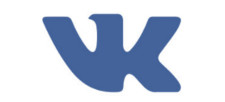Navigating the New Digital Landscape: Registration and Protection in Social Media
November 2, 2024, 10:31 pm
In a world where social media is a double-edged sword, new regulations are reshaping the landscape. The Russian government has introduced a registration system for social media channels with over 10,000 subscribers. This initiative, launched through the "Gosuslugi" platform, aims to enhance user protection and transparency in advertising. But what does this mean for content creators and users alike?
The registration process is straightforward. Channel owners must submit basic information, including their name, phone number, and a link to their channel. Once registered, they receive a unique identifier. This identifier must be displayed prominently on their channel. If a channel fails to register, it faces significant restrictions. No advertising, no donations, and no reposts from other channels. The clock is ticking, with the deadline set for January 1, 2025.
This move is part of a broader strategy to combat online fraud and improve the advertising ecosystem. The government argues that a transparent registry will help users identify legitimate channels. It’s a protective shield against the rising tide of internet scams. However, it also raises questions about privacy and freedom of expression.
The registration requirement is not just a bureaucratic hurdle. It’s a gatekeeper. Only channels with the "A+" mark can engage in advertising and fundraising. This exclusivity could stifle smaller creators who struggle to reach the 10,000-subscriber threshold. The implications are profound. The digital space, once a wild frontier, is becoming a regulated environment.
Meanwhile, VK, a major player in the Russian social media scene, is stepping up its defenses. The company has launched WARP, an AI-driven system designed to protect against DDoS attacks and malicious bots. This system analyzes user behavior to distinguish between genuine activity and potential threats. It’s a sophisticated approach to cybersecurity, reflecting the growing importance of AI in safeguarding digital platforms.
WARP is not just a shield; it’s a proactive guardian. It adapts to evolving cyber threats, identifying anomalies that traditional systems might miss. This is crucial in an era where cyberattacks are becoming more sophisticated. The system can detect and mitigate prolonged attacks, which can last days rather than the typical short bursts. It’s a game-changer for VK, ensuring that its services remain available and secure for millions of users.
The investment in WARP signals VK’s commitment to creating a robust digital infrastructure. The company is not just protecting its users; it’s also positioning itself as a leader in AI-driven solutions. There’s talk of offering WARP as a cloud service to external clients, expanding its reach beyond its own platforms.
As these developments unfold, the digital landscape is shifting. Content creators must navigate new regulations while ensuring their channels remain viable. The registration process could create a divide between established creators and newcomers. Those who can’t meet the subscriber threshold may find themselves sidelined.
For users, the changes promise greater security but also raise concerns about censorship. The requirement for registration could lead to a chilling effect, where creators self-censor to avoid scrutiny. The balance between regulation and freedom is delicate. It’s a tightrope walk, and the stakes are high.
The implications extend beyond Russia. As governments worldwide grapple with the challenges of regulating social media, the Russian model could serve as a blueprint—or a warning. The balance between user protection and freedom of expression is a global concern. Countries must tread carefully, ensuring that regulations do not stifle innovation or infringe on rights.
In conclusion, the new registration system and VK’s WARP initiative represent a significant shift in the digital landscape. They reflect a growing recognition of the need for security and transparency in social media. However, they also pose challenges for content creators and users. As we move forward, the interplay between regulation, security, and freedom will shape the future of social media. The digital world is evolving, and those who adapt will thrive. The rest may find themselves lost in the shuffle.
The registration process is straightforward. Channel owners must submit basic information, including their name, phone number, and a link to their channel. Once registered, they receive a unique identifier. This identifier must be displayed prominently on their channel. If a channel fails to register, it faces significant restrictions. No advertising, no donations, and no reposts from other channels. The clock is ticking, with the deadline set for January 1, 2025.
This move is part of a broader strategy to combat online fraud and improve the advertising ecosystem. The government argues that a transparent registry will help users identify legitimate channels. It’s a protective shield against the rising tide of internet scams. However, it also raises questions about privacy and freedom of expression.
The registration requirement is not just a bureaucratic hurdle. It’s a gatekeeper. Only channels with the "A+" mark can engage in advertising and fundraising. This exclusivity could stifle smaller creators who struggle to reach the 10,000-subscriber threshold. The implications are profound. The digital space, once a wild frontier, is becoming a regulated environment.
Meanwhile, VK, a major player in the Russian social media scene, is stepping up its defenses. The company has launched WARP, an AI-driven system designed to protect against DDoS attacks and malicious bots. This system analyzes user behavior to distinguish between genuine activity and potential threats. It’s a sophisticated approach to cybersecurity, reflecting the growing importance of AI in safeguarding digital platforms.
WARP is not just a shield; it’s a proactive guardian. It adapts to evolving cyber threats, identifying anomalies that traditional systems might miss. This is crucial in an era where cyberattacks are becoming more sophisticated. The system can detect and mitigate prolonged attacks, which can last days rather than the typical short bursts. It’s a game-changer for VK, ensuring that its services remain available and secure for millions of users.
The investment in WARP signals VK’s commitment to creating a robust digital infrastructure. The company is not just protecting its users; it’s also positioning itself as a leader in AI-driven solutions. There’s talk of offering WARP as a cloud service to external clients, expanding its reach beyond its own platforms.
As these developments unfold, the digital landscape is shifting. Content creators must navigate new regulations while ensuring their channels remain viable. The registration process could create a divide between established creators and newcomers. Those who can’t meet the subscriber threshold may find themselves sidelined.
For users, the changes promise greater security but also raise concerns about censorship. The requirement for registration could lead to a chilling effect, where creators self-censor to avoid scrutiny. The balance between regulation and freedom is delicate. It’s a tightrope walk, and the stakes are high.
The implications extend beyond Russia. As governments worldwide grapple with the challenges of regulating social media, the Russian model could serve as a blueprint—or a warning. The balance between user protection and freedom of expression is a global concern. Countries must tread carefully, ensuring that regulations do not stifle innovation or infringe on rights.
In conclusion, the new registration system and VK’s WARP initiative represent a significant shift in the digital landscape. They reflect a growing recognition of the need for security and transparency in social media. However, they also pose challenges for content creators and users. As we move forward, the interplay between regulation, security, and freedom will shape the future of social media. The digital world is evolving, and those who adapt will thrive. The rest may find themselves lost in the shuffle.

